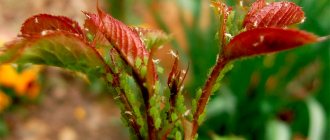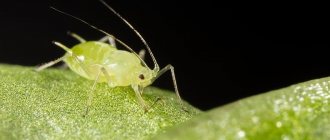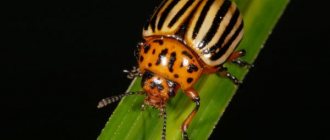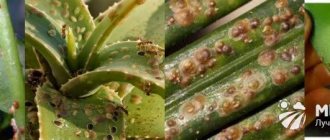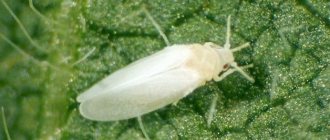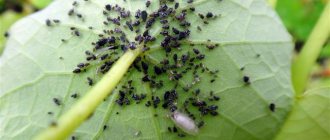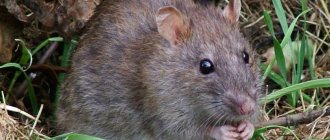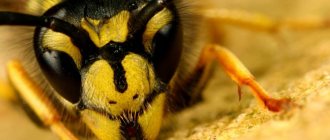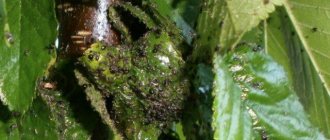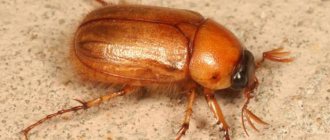Pepper is attacked by a huge number of harmful insects, many of which are dangerous and can destroy the entire crop in a matter of days. To prevent this from happening, you need to promptly identify and fight the enemies of the vegetable crop.
Pepper is a very tasty and healthy vegetable, rich in vitamins and microelements. Unfortunately, not only we think so, but also numerous pests that annually destroy part of the greenhouse pepper harvest. Today we will tell you about the most dangerous of them, and also teach you how to deal with small dirty tricks.
Pepper pests - slugs
pepper pests
A slug is a type of mollusk that is similar to a snail, but without a shell. He loves to eat not only the foliage, but also the fruits of this vegetable crop. Slug sizes vary from 2 to 5 cm. These pests leave behind holes in the leaves.
They feed mainly at night or in the evening, when the destructive heat for them subsides. To combat slugs, take the following series of measures:
1. Don’t neglect weeding the area.
2. Do not overwater the plant, as moist soil is ideal for slugs.
3. Be sure to sprinkle the soil with ash, a mixture of tobacco and lime, mustard or ground pepper; the slug does not like this.
4. Also, these pests do not like the smell of parsley, so you can plant parsley between the rows of peppers.
5. Use special preparations that are sold in any agricultural store, for example Slime Eater or Ferramol.
Bacterial
Bacterial diseases of sweet pepper are similar in description and external signs to many fungal infections. Therefore, it is often difficult to differentiate the type of phytopathology. In the fight against pepper diseases, it is better to use drugs that simultaneously have antifungal and antibacterial effects.
Bacterial canker of bell pepper
Pepper disease is caused by the bacteria Clavibacter michiganensis. Bacterial cancer is typical for crops grown in southern regions and greenhouses.
The leaves become discolored, fall off, and necrotic spots 1-3 cm in size appear on the fruits. At the initial stage of disease development, the bushes are treated with copper-containing preparations or Fitolavin.
Black bacterial spot
The disease is caused by the bacterial organism Xanthomonas vesicatoria. Black, watery spots form on infected leaves and stems. Affected areas on leaf blades are usually located along the veins.
Convex black dots form on the fruits, which gradually grow. The surface of diseased peppers becomes rough. The spots turn into ulcers, due to which the fruits begin to rot.
Rapid proliferation of bacteria occurs in humid conditions at temperatures from +25 to +30 degrees.
To combat the disease, fungicidal agents are used: Abiga-Pik, Bordeaux mixture.
Prevention of black bacterial spot comes down to treating seeds before sowing, maintaining crop rotation, and spraying with Fitolavin.
Aphids - pests of pepper leaves
pepper pests
These little midges feed not only on the foliage, but on the plant as a whole. As a result, the plant can not only become infected, but also die.
If you notice a shine and a sticky film on the leaves, and the leaves begin to curl and dry out, then aphids have settled on your plant. This small pest loves high humidity and high air temperatures.
To combat aphids, use a number of measures:
1. Plant dill or coriander next to the pepper; these plants will attract ladybugs - the enemy of aphids.
2. As a folk remedy, spray the plant with an infusion of yarrow and laundry soap.
3. You can also use manganese solution.
4. Water with nettle infusion along with water (infuse for 24 hours).
5. Use special preparations, such as Karbofos or Agravertin, but before fruit set.
Processing technique
How to spray bushes? Prepare a product or preparation that will be used to spray the pepper beds. The spray bottle must be clean and dry, without any residues of old solutions. The distance between the device and the bush should be at least 40-60 cm.
It is undesirable to have small children or pets nearby. It is recommended to treat bushes on a dry and cloudy day. If the drug is toxic, then protective equipment must be used. During the procedure you should not drink or eat, or smoke.
After treatment, carefully wash garden tools and put them away until next use.
Insect pest whitefly
A very dangerous and common pest that resembles aphids in appearance. Whiteflies can be visually confused with moths. The pest is mainly located on the inside of the leaf and lays eggs there.
These insects live in flocks. They disrupt the pepper's metabolism and draw juice out of it. They are also carriers of dangerous infectious diseases.
To fight use:
1. The method of regular rinsing with water, if there are few insects, or wiping the leaves with a soap solution.
2. Treat the culture with Intravir.
3. You can make traps with adhesive composition.
4. Treat with karbofos.
The article was compiled using the following materials:
Akhatov A.K., Hannibal F.B., Meshkov Yu.I. and others. Diseases and pests of vegetable crops and potatoes, M.: Partnership of Scientific Publications KMK, 2013. – 463 p.
2.
State catalog of pesticides and agrochemicals approved for use on the territory of the Russian Federation, 2022. Ministry of Agriculture of the Russian Federation (Ministry of Agriculture of Russia) Download >>>
3.
Lukhmenev V.P. Plant pathology. A textbook for university students studying agronomy. Orenburg, 2012. – 299 p.
4.
Peresypkin V.F. Diseases of agricultural crops. Volume 3. Diseases of vegetable and fruit crops, Kyiv: Urozhay, 1991. - 208 p.
5.
Rakhimova E.V. A brief illustrated guide to powdery mildew mushrooms of Kazakhstan and border areas / E.V. Rakhimova, G.A. Nam, B.D. Ermekova. – Novosibirsk: Publishing House TsRNS, 2014. – 129 p.
6.
Sokolov Yu.V., Sokolova I.M. Detection of a telemorph of the fungus Leveillula taurica on pumpkin crops in the Lower Volga region., Mycology and Phytopathology, Volume 44, Issue 5 – 2010, p.472 – p.475
7.
Stancheva J. Atlas of diseases of agricultural crops. Volume 1. Diseases of vegetable crops., Sofia: 2005. - 181 p.
Images (reworked): 8.
Powdery mildew (Leveillula taurica) of pepper, by Dr Parthasarathy Seethapathy, Tamil Nadu Agricultural University, Bugwood.org, licensed under CC BY
Collapse List of all sources
The Colorado potato beetle is a voracious pest of peppers.
A well-known and widespread pest, both the adult beetle and its voracious larva. They eat everything - leaves, stems, and fruits. Can lead to the death of the plant.
Methods to combat them:
1. By hand picking.
2. Treating pepper with celandine infusion helps a lot.
3. Beetles do not like the smell of beans and garlic, so you can plant these plants next to the pepper.
4. Use special chemicals.
5. Hill up peppers in mid-summer.
Why shoots need to be pinched
At the very beginning of development, the pepper has a single stem. But later, new stems and leaves begin to appear. This leads to severe thickening of the plantings.
To ensure balanced growth and maximum fruit production, stem development needs to be regulated by removing branching stems and foliage.
Forming a bush helps:
- preserve the released nutrients for the formed fruits, and not spend them on the development of ballast green mass;
- increase ventilation;
- provide unobstructed lighting;
- reduce the likelihood of disease;
- make it easier to care for bushes;
- get juicy, aromatic peppers of the same size.
But you should not be zealous, since green mass in a certain percentage ratio, relative to the harvest, is extremely necessary. A “bare” bush will not be able to synthesize a sufficient amount of energy to grow the required number of fruits. Therefore, you need to start shaping peppers wisely, armed with knowledge and skills.
Spider mite
It is difficult to notice a small bug; its size is no more than 0.5-1 cm, in addition, it camouflages itself under foliage.
It attaches to the inside of the leaf and sucks out the juices, while releasing a dangerous liquid, as a result of which the plant dies. It can enter the plant through the air or with soil.
Methods to combat this pest:
1. Treat the soil with lime mortar.
2. Watering the plant with warm water with laundry soap and kerosene.
3. Use chemicals, for example, Inta-Vir, Fitoverm and Iscarbio.
Ants
We are used to admiring these highly organized creatures exactly until the moment they begin to harm our crops and supplies. Garden ants are attracted to the secretions of aphids and the pepper plantings themselves are interesting to them. Ants become “shepherds,” guarding aphids on plants and feasting on their juice. Accordingly, it is impossible to defeat aphids without eliminating a colony of thousands of ants.
Ants and aphids do not like to camouflage themselves - plant stems clinging to them immediately become noticeable. In general, the harm caused by ants comes down to the breeding and “exploitation” of aphids, although they themselves regularly spoil plantings, destroy beds and flower beds and do not disdain plant sap. If ants come to the site, get ready for a protracted war.
Measures to combat ants:
|
Pepper pests - thrips
Insects of a dark color with a striped abdomen, 0.5-1.5 mm in size. They are difficult to see and can be confused with seeds. These insects feed on juice from fruit ovaries. They eat the entire plant and carry dangerous diseases.
If you notice light spots on the leaves, which then merge with each other and the leaf turns completely white, then your vegetable crop is infected with these pests. There are several methods to combat them:
1. Spray the plant with an infusion of onion, garlic and water.
2. You can make traps with a yellow adhesive base.
3. Spray with marigold infusion (crush the dry plant and add warm water, leave for 2 days).
4. Use special products, such as Fitoverma or Akarina.
Nematodes
The results of the life activity of these microscopic worms are mistakenly taken for pepper diseases. The root-knot, or root-knot, translucent nematode, only 1-2 mm in size, lives exclusively underground. Its presence in the area is usually noticed too late - the parasite has time to satiate itself, give birth to offspring and “retire.”
Initially, the above-ground parts of the plants show clear signs of lack of nutrients and moisture. The stems begin to curl, the leaves turn yellow, their edges curl, growth slows down and stops. “Crop failure,” we sigh, digging up an almost dead plant. And then it turns out that the roots of the pepper have become thread-like (that is, they have simply died), and they have characteristic thickenings - “cones” and “bulbs” of brown and yellow color. Here it becomes obvious that the culprit of the crop failure is the nematode, but it is no longer possible to save the plant.
Nematode control measures:
|
Medvedka
pepper pests
A dangerous pest that feeds on the root system of a plant. Reaches 8 cm in length, has a shell and wings. Can both fly and swim.
Do not use to combat:
1. Weed the soil thoroughly.
2. Loosen the soil more often.
3. Pour hot pepper infusion or soapy water into the holes.
4. Use special chemicals, such as Medvetox, Bankol.
Scoops
These small moths are camouflaged and difficult to spot, and they are active mainly at night. If you notice nibbled edges on a leaf, then these are cutworms.
To combat them, the following measures are taken:
1. Weeding the soil.
2. Manually collect caterpillars.
3. Make traps from plastic bottles, pouring any juice or jam into them.
4. Use special chemicals, for example, Volaton or Arrivo.
Pepper: pests, prevention and control. Valuable advice
To protect your plant from insect pests and reap a good harvest, we recommend following a number of measures:
1. Dig up the soil in a timely manner and apply mineral and organic fertilizers.
2. Peppers should be planted in a windless and bright area.
3. It is better to plant peppers in the place where onions and legumes previously grew.
4. Water with settled water once a week.
5. For prevention, spray the bushes with a soap solution.
6. Regularly observe and inspect plants for the presence of pests and diseases.
General information: who makes holes in leaves
If caterpillars, plant wilting or other diseases of peppers are found in the greenhouse, the gardener must immediately take measures to destroy them. Pest and disease control becomes very difficult if treatment is not started on time.
Depending on the form of the disease, pepper pest control and treatment may vary. Very often, gardeners have no idea what kind of insect pest has affected their plants in the greenhouse, and are guided only by photos, comparing the picture of damage to peppers with already known symptoms.
Most often you can observe holes on the surface of the leaves, partial or complete wilting of the plant, as well as a general picture of oppression of peppers in the greenhouse. If it was not possible to determine the cause of the disease from the photo, then you should pay attention to the main signs characteristic of certain types of pests.
